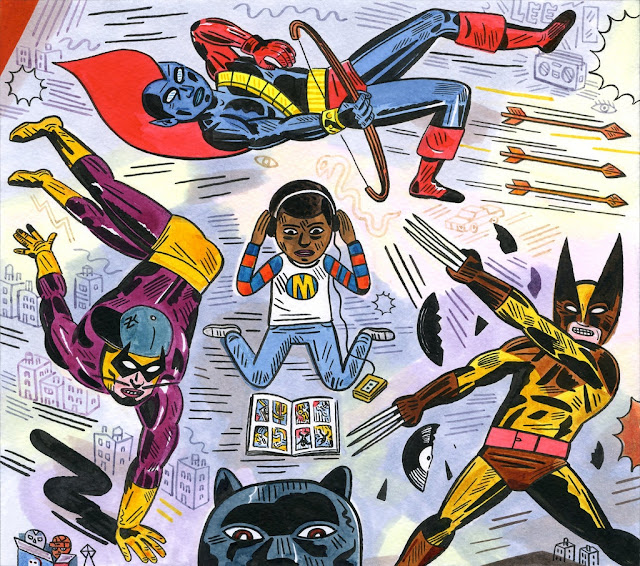6 DICAS PARA MEMORIZAR
PALAVRAS EM INGLÊS
Conseguir memorizar palavras em inglês é uma tarefa que requer dedicação e muita prática. Afinal, por mais que o idioma faça parte do nosso dia a dia em diversas ocasiões, é preciso lembrar que o português tem bases e origens distintas, o que torna algumas palavras e pronúncias completamente diferentes das nossas.
E são justamente essas palavrinhas mais incomuns entre os idiomas que são as mais difíceis de memorizar.
Mas como a gente está sempre disposto a ajudar no aprendizado e trazer dicas valiosas para quem quer aprimorar a língua, hoje, nós separamos 6 passos imbatíveis para você memorizar palavras em inglês. Bora conferir?
1. Crie um glossário de palavras em inglês
Escrever no papel é uma excelente forma de memorizar palavras em inglês e também de aumentar o vocabulário gradativamente.
Sendo assim, uma dica é separar algumas folhas do caderno de estudos (ou investir em um só para isso) e criar uma espécie de glossário próprio.
Por exemplo, você pode separar por categorias, como alimentos, objetos, verbos, entre outras, e sempre incluir novas palavras na lista para memorizar mais rápido.
E, de vez em quando, reler tudo e repetir em voz alta também ajuda a fixar a pronúncia na cabeça. Fica a dica!
2. Use post-its
Os famosos papeizinhos colantes coloridos podem ajudar muito nesse processo de memorizar palavras em inglês no dia a dia. E o melhor disso tudo é que podem ser utilizados de diferentes formas.
Bom, quer uma ajudinha com ideias? Vamos lá então!
Se você tiver espaço no quarto ou no espaço de estudos, que tal criar um quadro específico de “memorização de palavras em inglês”?
Ou seja, divida o quadro em categorias e cole os post-its com as novas palavras aprendidas e que sejam mais difíceis de guardar na memória.
Toda semana você pode renovar! Se não, os post-its podem ser colados na porta, na tela do notebook, num varalzinho na parede e assim vai. Use a imaginação como quiser!
3. Repita em voz alta
Outra dica legal para memorizar palavras em inglês é repetir e pronunciar em voz alta.
Afinal, quando você faz isso, além de reforçar sua memória, você ainda pratica o listening, que também é fundamental nesse processo.
Por isso, tente criar esse hábito de trabalhar com a voz e repita trechos e palavras soltas que sejam mais complicadas de memorizar.
4. Entenda o sentido das palavras em inglês
Saber a tradução literal da palavra em inglês nem sempre é a melhor maneira de memorizá-la. Afinal, diferentemente do português, alguns verbos e expressões podem ter significados completamente diferentes nas frases quando acompanhado de outros advérbios ou preposições, por exemplo.
Quem já está estudando os phrasal verbs deve saber bem disso! Logo, em muitos casos, é melhor buscar entender o contexto dessas palavras dentro das frases do que tentar uma tradução literal para cada uma delas, o que seria muito mais difícil de memorizar.
5. Crie frases e escreva em um papel
Uma outra dica bacana para praticar e memorizar palavras em inglês que sejam mais incomuns para você é criar o hábito de sempre buscar novos exemplos para elas.
Ou seja, ao invés de repetir e reescrever a mesma frase que você acabou de ler com a tal palavra, tente encaixá-la em outras ocasiões e invente outros exemplos para praticar.
6. Crie uma rotina de estudo
Aprender e memorizar o inglês não deve se limitar unicamente às suas aulas e cursos, beleza?
É muito importante que essa prática se estenda para outros momentos de sua rotina e há muitas formas de organizar isso.
Por exemplo, naquele intervalo curto na hora do almoço, no transporte ou em qualquer outro momento do dia, você pode tirar alguns minutos para reler o seu glossário.
À noite, antes de dormir, pode ler a página inteira de um livro em inglês. Enquanto prepara o café da manhã, pode escutar um podcast. E assim vai! Dá para encaixar a prática do inglês em diferentes rotinas e isso não precisa seguir aquele padrão de uma aula, entendeu?
E sem dúvidas tudo isso ajuda a melhorar o domínio da língua, aumentar o vocabulário e memorizar mais palavras. Essas são algumas dicas básicas para memorizar palavras em inglês e aprimorar cada vez mais a sua fluência.
Mas como bem destacamos, isso deve ser encarado como um processo contínuo e frequente, já que em todo idioma sempre haverá termos e palavras mais difíceis de guardar.
Adaptado de: https://www.wizard.com.br/idiomas/6-dicas-para-memorizar-palavras-em-ingles/. Acesso em: 30 ago. 2021.























